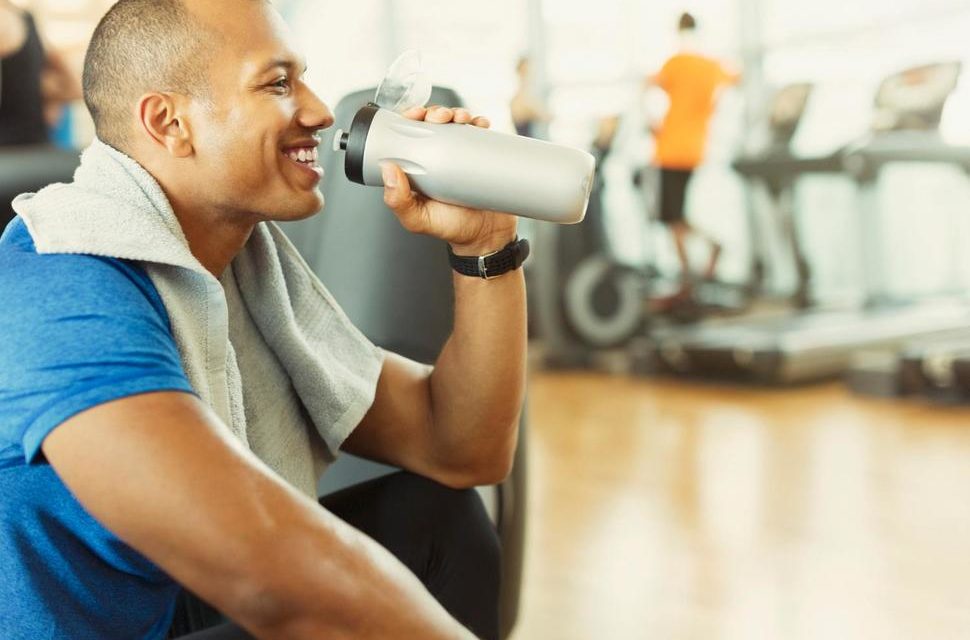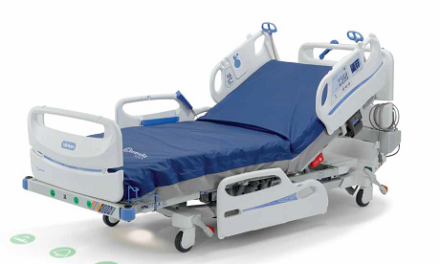WHEN IT COMES TO working out, a water bottle is a non-negotiable need. But is it water that should be in your bottle or a sports drink, coconut water or pinches of salt? That’s a little less clear-cut.
When you sweat, you don’t just lose water, but also electrolytes, the minerals that help deliver fluids to the cells that need them and are essential to everything from muscle health to brain function, explains board-certified sports dietitian Kelly Pritchett, an assistant professor in nutrition and exercise science at Central Washington University and a spokesperson for the Academy of Nutrition and Dietetics.
“Sodium is the primary mineral lost in sweat during exercise,” Pritchett says. “Sodium losses average about 1 gram per liter of sweat lost. So if someone loses 1 liter of sweat per hour, they are also losing about 1 gram of sodium per hour, on average.” However, sodium loses can range from 0.2 grams per liter of sweat to 12.5 grams per liter of sweat have been recorded, according to the textbook “Essentials of Strength Training and Conditioning.” The body also loses chloride in large amounts via sweat, along with potassium, magnesium and calcium, albeit in smaller amounts.
While electrolyte losses can hinder exercise performance and fitness results, the primary concern for exercisers should be hyponatremia, a condition in which sodium levels fall to dangerously low levels. Depending on how low sodium levels get, the effects can range from muscle cramps and headaches to seizures and even a coma, according to the Mayo Clinic. Normal blood sodium levels range from 135 to 145 milliequivalents per liter. Hyponatremia occurs when levels fall below 135 milliequivalents per liter, with more severe symptoms occurring with levels below 125 milliequivalents per liter.
For that reason, your goal should be to keep your electrolytes at healthy levels during exercise, Pritchett says. When you keep your electrolytes at the right level, you ensure that your body can absorb and use whatever fluids you take in, your vital organs function properly and get the most out of each workout.
That’s where electrolyte-containing beverages and tablets come into play. Do you need them? And if so, how do you choose the right one? After all, their levels of electrolytes vary widely.
Here are four signs that your workouts would benefit from more electrolytes – and how to make sure you’re getting the right amount.
You’re exercising for more than an hour. “In general, water is only recommended for exercise that lasts up to an hour,” explains Joy Dubost, a New York City-based board-certified sports dietitian. If exercising for more than an hour, especially if it’s at a higher intensity (meaning you aren’t stretching for 90 minutes straight), then a sports drink is likely necessary, she says.
But before you refuel with a sports drink, keep in mind such beverages are pretty low in sodium. “The average sports drink will contain enough sodium for most athletes because our average dietary intake of sodium is so high, but in the case of an endurance or ultra-endurance event, individuals may need more electrolytes.
For example, in a 2016 study of triathletes published in the Scandinavian Journal of Medicine & Science in Sports, racers who took salt tablets along with their sports drinks replaced about 71 percent of the sodium they had lost from sweat, while those who consumed sports drinks alone only replaced about 20 percent of the sodium they had lost. The salt-takers also finished the race 26 minutes faster.
You sweat a lot – and it’s salty. Even given the same workout, people sweat differently, Pritchett says. For example, research suggests that larger athletes sweat more and lose more sodium through their sweat than smaller teammates. The most obvious signs that you’re a heavy sweater are if in exercise classes, you often feel like you are sweatier than your fellow classgoers and, if after a hard workout, your skin feels chalky or gritty, Pritchett says. You may even see a thin layer of white, indicating salt coming through your pores, Pritchett adds.
If this sounds familiar, water is likely not enough to keep you well hydrated during your workouts. Before any sweat session, board-certified sports dietitian and certified strength and conditioning coach Marie Spano recommends adding a pinch of table salt to every 8 ounces of any sports drink you put in your water bottle or hydration pack. You can also take sodium tablets, which are available at most running stores.
You’re exercising in hot, humid weather. The hotter and more humid the conditions in which you’re exercising are, the higher the likelihood is that you need electrolytes. Not only does extreme heat cause the body’s core temperature to rise, leading to increased sweating, but humidity also prevents sweat from evaporating and effectively cooling you, according to the Mayo Clinic. The result: You sweat even more – and lose more electrolytes.
Exercising, especially at high intensities or for long durations, in hot, humid weather is discouraged, and the American Council on Exercise notes that heat exhaustion is possible in temperatures as low as 80 degrees when humidity reaches 60 percent. However, if you do find yourself exercising in hot or humid weather, you can help combat excessive electrolyte losses through a combination of sports drinks and electrolyte tablets, Pritchett says.
You don’t feel right on water alone. As in all things health, listening to your body and the signals it sends you is incredibly important to ensure you stay hydrated. The body produces warning signsbeyond feeling thirsty when electrolyte levels drop, Dubost explains. Fatigue, muscle cramps, nausea and headaches can all point to either dehydration or mild hyponatremia, both of which warrant increased electrolyte intake. Remember: Consuming too much water can also spur hyponatremia, so as you increase fluid intake, you should also increase electrolyte intake.
Because sodium is the primary electrolyte lost during exercise, when most people move beyond water or sports drinks, they go straight to salt tablets. But if you’ve tried switching to salt tablets and you still aren’t feeling right during especially sweaty workouts, you might also want to consider increasing your intake of potassium throughout the day, Spano suggests. Just like most Americans don’t get the recommended amount of potassium, most sports drinks don’t have enough electrolytes to replace what’s lost during exercise, she says. Coconut water, while lower in sodium than sports drinks, does contain more potassium in a single cup than in a whole banana. Avocados, sweet potatoes and yogurt are also rich in electrolytes.






Facebook Comments